Stijn Van Der Veken shoots the return of Willow
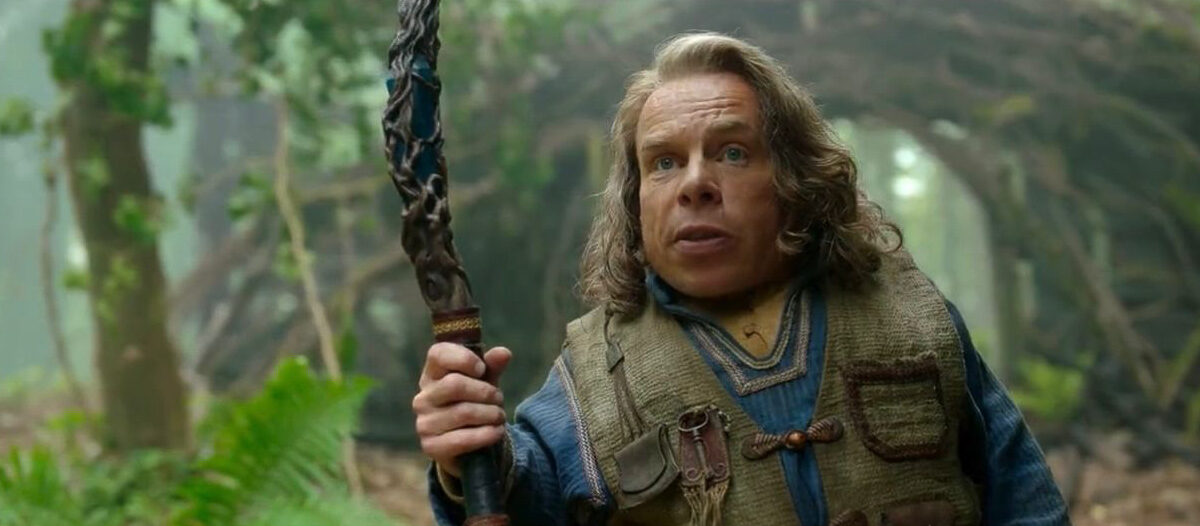
17 years after the defeat of Queen Bavmorda, Willow Ufgood (Warwick Davis), has returned to lead a party of misfits on a new quest. Episodes one and two of the eight part series were captured by Stijn Van Der Veken SBC.
Willow is available to stream on Disney+.
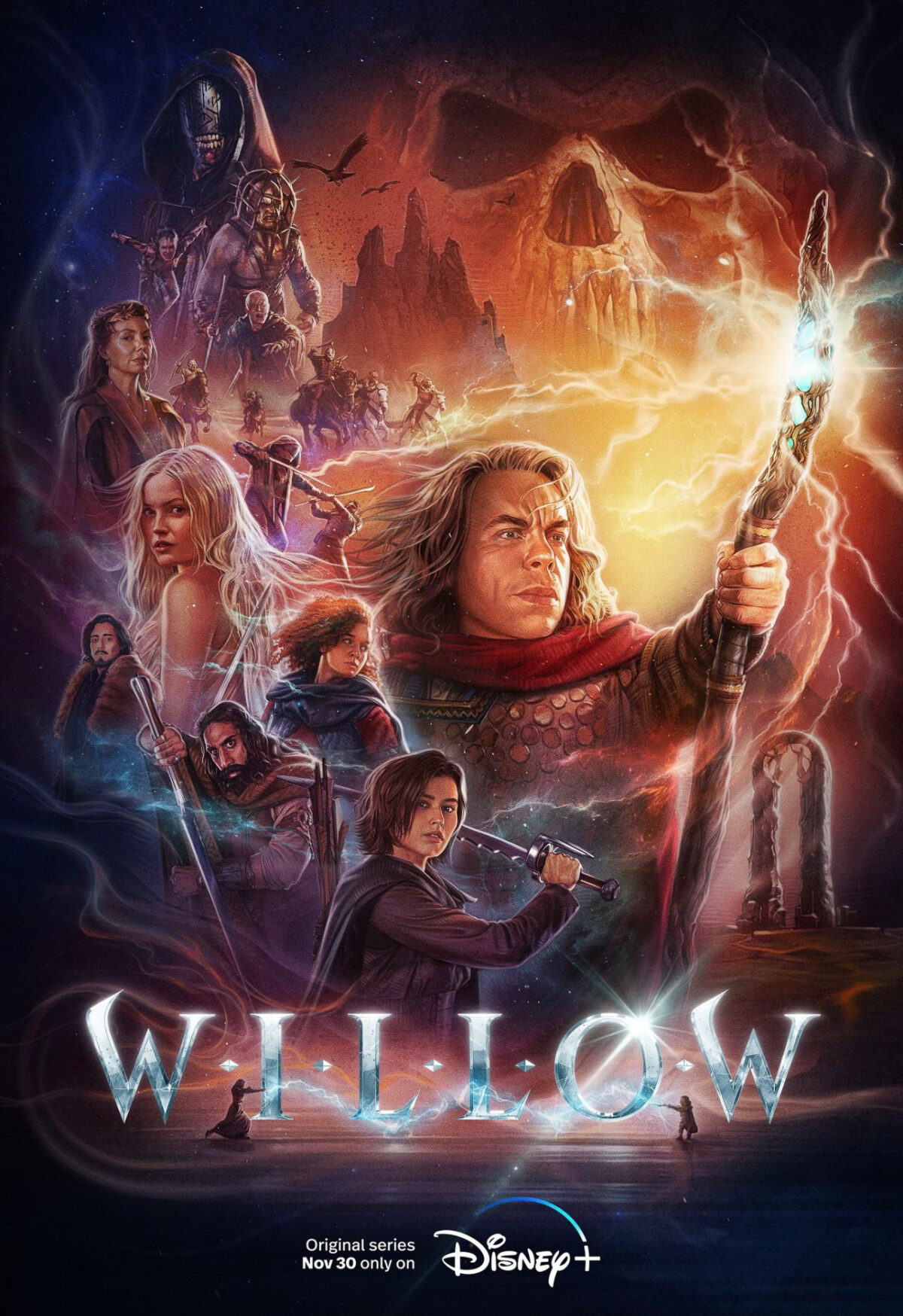
Where did you train as a cinematographer?
I went to film school in the south of Belgium at Institut-des-arts-de-diffusion, graduated in 1989 and started shooting as a camera assistant. Later I did a lot of documentary work before I moved into drama. At a certain point, I tried to enhance my career to the international television and movie business which took a while, but I’ve been working for years now on international productions, mainly in the UK.
Who are your DP inspirations?
Roger Deakins because of his naturalism, the way he shapes the image, his invisible cinematography. But if you start analysing it it’s so well thought through. There are of course many other brilliant cinematographers, but Deakins always inspired me the most.
How did you first get involved with Willow?
I’d previously worked with director Stephen Woolfenden on Outlander, we have a good match together and so he got me involved on the show, as it often goes. Initially, we were supposed to shoot the last two episodes (the finale), but then because of circumstances we were bumped up to do the pilot and the second episode. Great! Now I could shape the style and look of the show completely from scratch.
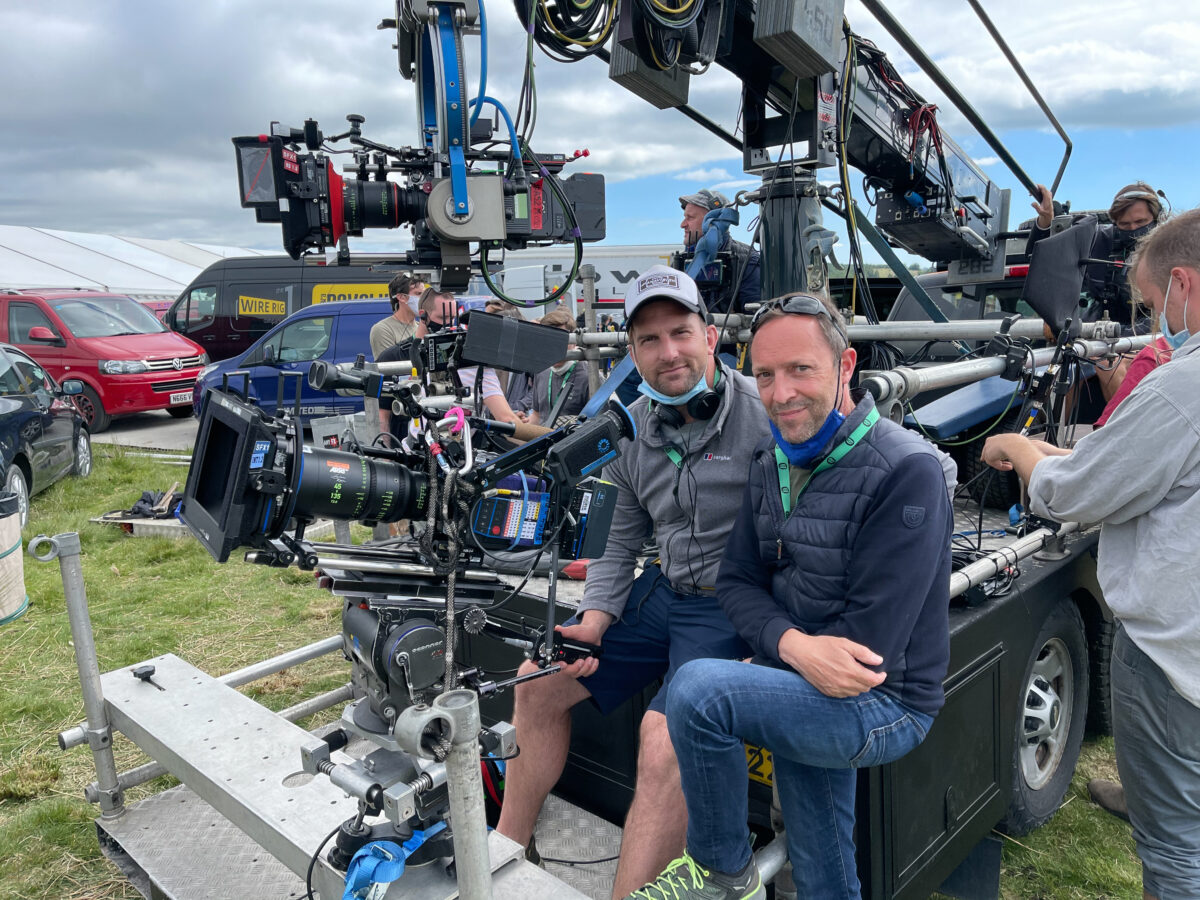
What were your initial conversations about the look of Willow? How much attention did you pay to the look of the original film?
Of course I saw the original film, but there was not really a visual reference as it was outdated. Jonathan Kasdan, known for the Star Wars Solo film,developed, wrote and was the main showrunner on Willow. Jon likes a kind of naturalism and being a big fan of Greig Fraser and Chivo he told me “just make it look as if they have shot it.” Of course, that put the bar very high, but I understood what kind of visual style he was after which I liked a lot as well.
Did you have any sort of dialogue with the other DP’s working on the series?
While I was halfway through my shoot, the next DP was already prepping with a new director for the next block. Lucasfilms asked me to do the third block as well, but because of the pandemic and lots of other personal stuff happening at the time (both of my parents passed away during and just after the shoot) I wasn’t able to go back to Wales though I would have loved doing another block. After myself, came Joel Devlin, James Friend and Will Baldy and each of us did two episodes. The second and third block DPs came to see me and we screened the material together, we spoke about how we could continue that look in a way despite every DP having their own style, but we stuck to the same equipment, LUTs and filtration.
We had four cameras on the show permanently, mostly two were permanently used and three and four were back-up cameras combined with Signature prime lenses from ARRI and two Signature zooms. Despite not being a big zoom lens user I loved both the 45-135mm and the 65-300mm, same concept, same glass and same designer, same look. We used them mainly on action scenes and some crane shots.
I like the Signature primes as they are fast, have a great contrast, are sharp on the actor’s eyes, velvet on the skin especially if you combine them with a gentle diffusion such as the SFX1 and they have a fantastic close focus.

Could you discuss your approach to shooting the horse chase sequence in Episode One?
The chase was shot from two different tracking vehicles. On one tracking vehicle we had a trailer with a fixed mechanical horse. All the profile and the ¾ frontal shots on the main cast were shot from a Bickers tracking vehicle type Silverado pulling the trailer with the mechanical horse and equipped with a Techno Crane and a second camera beside. They are actually sitting on the mechanical horse which is attached to the tracking vehicle. That was for all the medium and close-up shots of our main cast. All the wider shots were done with doubles, horse riders from the same team that did Game of Thrones, shot from a buggy type of vehicle called Maverick and assisted by a full-time drone unit. Once the cast jumps off the cliff it becomes full VFX. We found an area which was a little bit upslope where we could see them going away, so we don’t really see what’s behind just before they jump off the cliff. The horse riders initiate the beginning of the jump and that’s where they cut to the topshot. From there on it is a full VFX. ILM (Industrial Light & Magic) was in charge of the VFX with Mark Bakowski as their main VFX supervisor being absolutely brilliant and becoming a close friend of mine during the shoot. His team was so great as well with Nicky, my on-set supervisor being a buddy. Learned so much from them! Previs for every VFX scene even some of them with realtime 3D interactive previs generated by the Third Floor / unreal game engine on iPad. I asked my operators to go and spend a couple of hours with the iPad to see what worked well on camera before we went to shoot it. The actual sets are set in a 3D space together with the camera / lens details; from there on you can virtually move the camera in all directions through an iPad in that 3D space while it tracks in real time.
What was the most challenging shot to capture?
Actually, two big scenes were very challenging…
The castle dinner scene in episode one. That was tricky because we had a couple hundred candles lit in that room which give us a certain amount of atmosphere, but we needed to add a little bit of light to control direction, intensity and balance between candlelight and shadows. We lit the main cast with a big but gentle soft directional key light. A bit tricky because controlling that balance is what I like to call “lighting with milligrams.” Two milligrams too much you ruin the reality of it and you feel there is artificial light being added. Tricky but challenging and great!
The other one was the Gales fight sequence in Episode one. All exterior night in a Studio backlot built courtyard. The Gales attack the castle by filling the courtyard with smoke by night. So, we shot several nights in a row between 11PM and 4AM (summertime in Wales) all handheld with 2 cameras in a place filled with smoke. Finding the balance between darkness and seeing enough our cast wasn’t easy, lighting the cast in a permanently fully smoked outset was not easy. Luckily production gave as lots of time and opportunities to test all this in terms of lighting and SFX smoke. Containing the smoke in more or less constant levels on an outside non-covered set was a real challenge but I am very proud on the sequence!
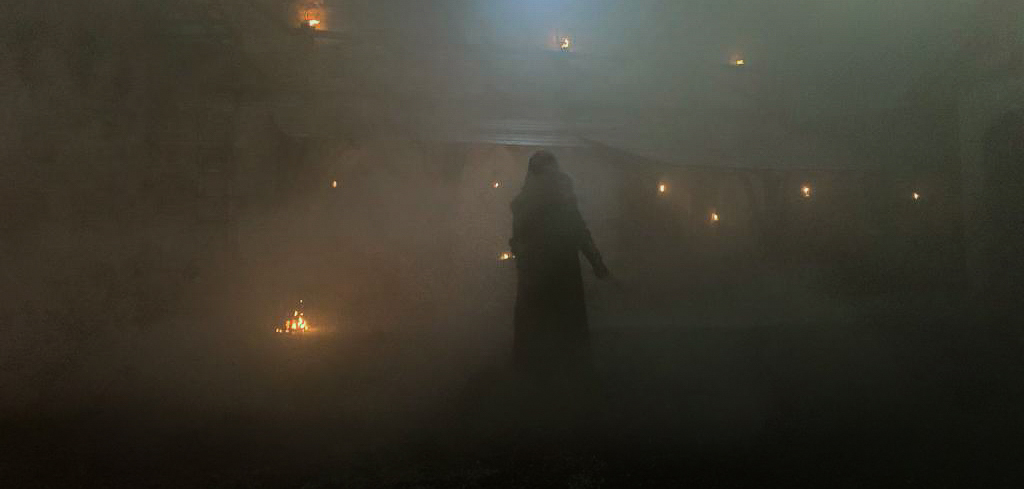
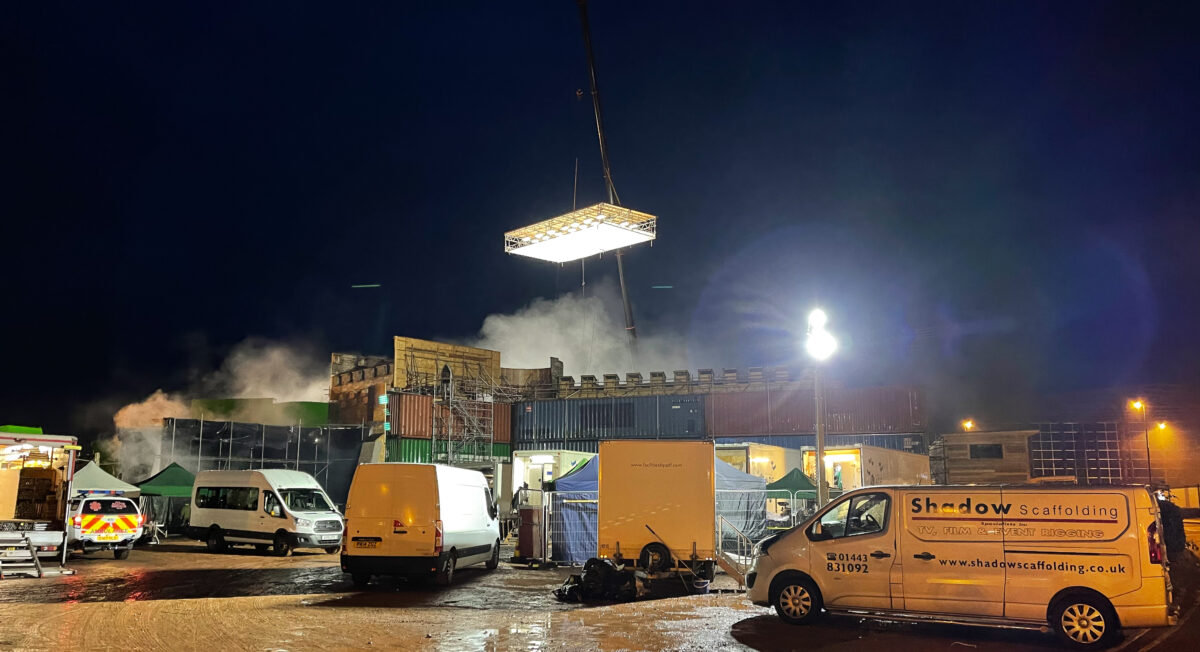
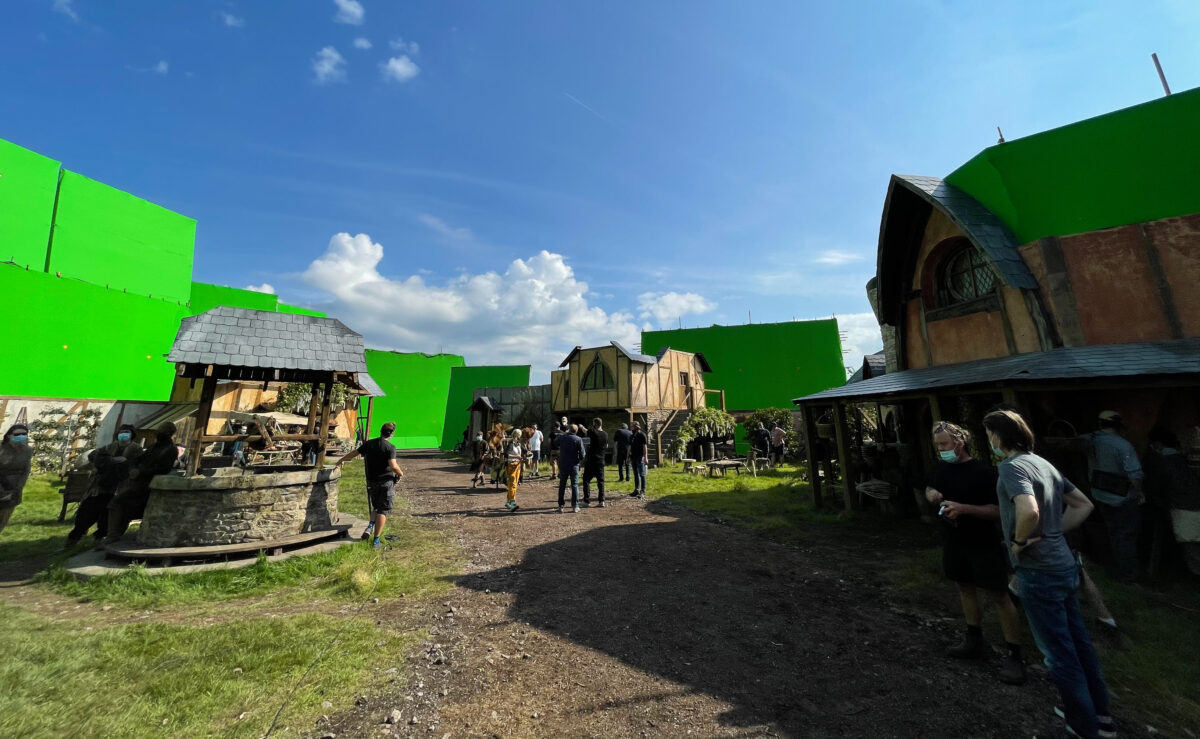
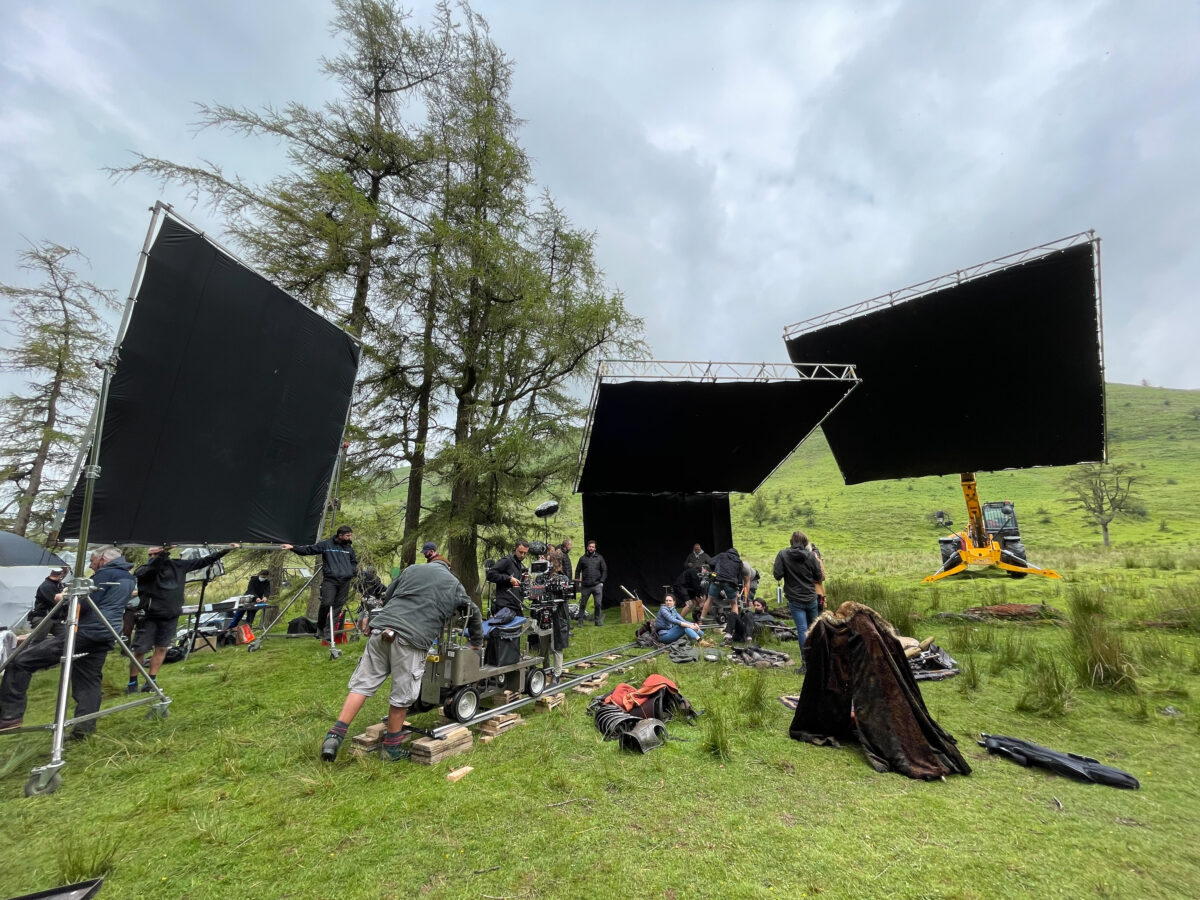
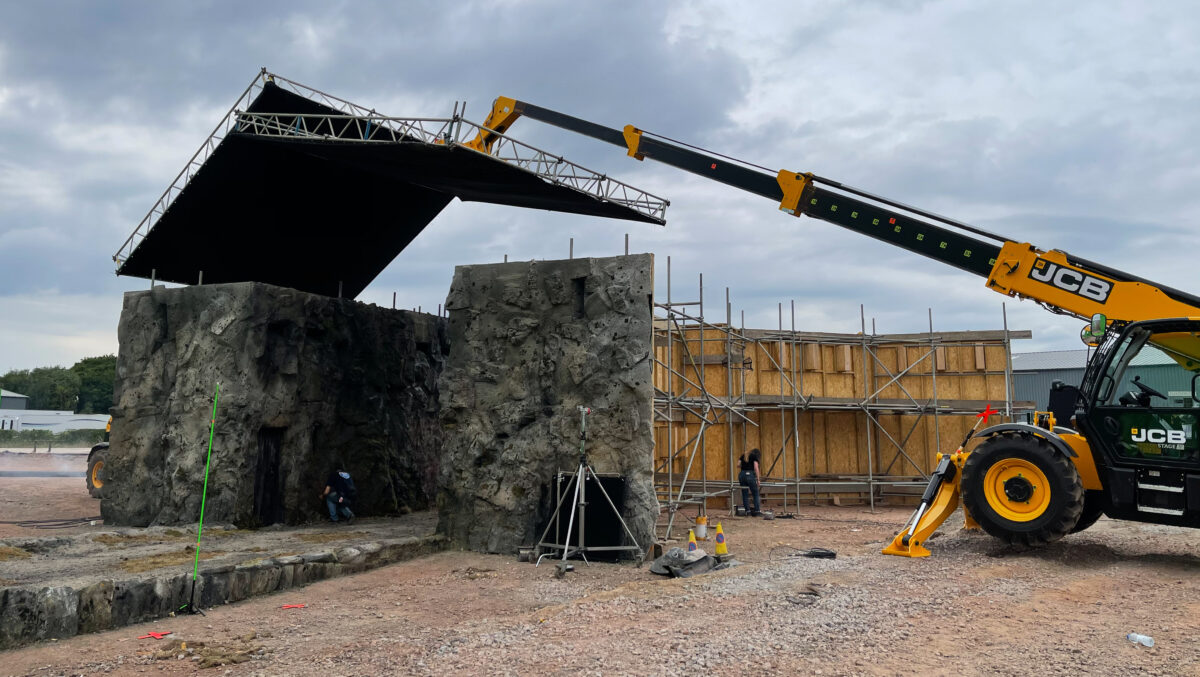
In the first episode, when Elora wanders off from the group, she reaches the forcefield and passes through it. Could you elaborate on how this effect was created?
Elora was set in front of a green key on the Studio backlot. We built a frame with six or eight vortex sources from Creamsource having eight colour channels each. The VFX guys built an engine for me that could drive the light sources using the same colours and the same light as the forcefield that would be created in VFX afterwards. There are lots of different colours that move in that forcefield. They made a file, which had all these colours, saturations, intensity and modulation, after a series of profound tests we inputted the file into the desk controlling the different vortex lights sources. So, when Elora was coming closer with her hands, there was a little bit of real light that came from the source that we had created, just to help the VFX afterwards.
Did you encounter any challenges with the locations?
Yes. It was all shot in Wales, the studios we used were the Dragon Studios located near Cardiff, beautiful studios. Some of the locations were very remote and in episode two there is a scene in the cave where the Nelwyn live, a real cave maybe 60 meters deep meaning dragging all the equipment down, a proper challenge to make that work. Most exterior locations were quite remote but 2021 summer in Wales was friendly to us!

Where did you do the final colour grade?
The colour grade was remotely done from London by Company 3 in LA while I was shooting another show called YOU in London at the time. Mitch Paulson was my grader who is actually Roger Deakin’s grader. Wow, what a different experience working with him! He is a different breed, the way he worked was stunning for me, so good!
By Oliver Webb
